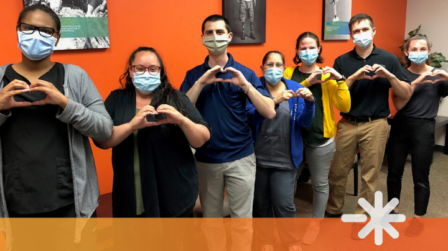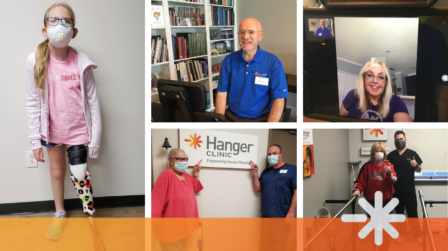Up-to-date information about Hanger Clinic’s response
Home Adaptations to Help Increase Mobility

After amputation, most amputees will need to make modifications to how they do things. Often, this includes creating home adaptations that allow for more mobility within your home. Determining what home modifications may need to be made in order to increase practicality can be a big decision, and your needs and preferences may change as time goes on.
Speak with your doctor, and consider your plans for using prosthetics long-term, including what tasks you’ll be completing without your devices, like bathing. Many items can be rented (especially for short-term needs) or purchased second hand, so do your research before purchasing something new.
Some cities provide financial assistance to individuals who become disabled and need their home remodeled to Americans with Disabilities Act (ADA) standards. Check on your city’s and county’s websites to see what assistance is available, if you qualify, and how to apply.
Home modification decisions are personal and based on your individual needs, but we’ve gathered some suggestions.
Overall
- Consider adding storage throughout your home, as it is important to maintain clear paths for the best mobility.
- Don’t be afraid to rearrange your furniture, or add end tables and other items that can be used for support, to allow for clear pathways and provide support for transitioning between sitting and standing.
Entrance and Living Area
- If you’re in a wheelchair temporarily and have stairs leading into your home, you may need a ramp short-term, whereas a large number of stairs or particularly steep stairs may mean you’ll want a more permanent ramp.
- Handrails are excellent for providing stability on stairs or uneven terrain.
- Lighting outside is important to help prevent falls or accidents after sundown, and motion sensor lighting is often a good solution.
- Doors
- For upper limb amputees, you might want to replace rounded door knobs with a door knob extender or lever door handles.
- Create more space by using hinge adjustments to change door pathways–offset hinges are especially helpful for wheelchair access, and sometimes changing the direction a door opens can greatly increase space.
- Consider removing doors completely, or widening doorways, if hinge adjustments don’t significantly improve space.
Kitchen
- Utilize the lower cabinets for the items that you need daily and keep items on the counter top.
- Utilize your kitchen table for food prep from a seated position.
- Gel pads can be placed under plates and bowls to prevent them from sliding around.
- Larger changes could include adding pull-down shelving and removing lower-level cabinets to accommodate a wheelchair.
Bedroom
- Consider a “touch on” lamp for beside your bed, so it is easy to turn the light on at night.
- Keep your assistive devices within reach, so you can more easily and safely get out of bed, with or without your prosthetic devices
Bathroom
- A shower/bath chair or bench and a set of grab bars can go a long way in making your bathroom more accessible. There are options available in many configurations and at many price points.
- Add a non-slip mat or two to make both showering and getting in and out of the shower safer.
- A hand held shower head attachment is a simple change that makes showering more flexible.
- Make space on your bench, or add an easy-to-reach shelf, to hold your soaps; liquid soaps in large bottles with pumps are usually easiest.
- Grab bars are also helpful next to the toilet.
- A night light will help make sure you can still get around in the dark.
- Larger changes could include modifying your tub to create a walk-in shower, lowering the sink, and removing cabinets underneath to accomodate a wheelchair.
Organizations like Rebuilding Together and the National Directory of Home Modification and Repair Resources can help you find resources for home modifications.
Talk with a Peer Mentor
Get your questions answered, about home adaptations or what to expect, by a trained peer visitor.



